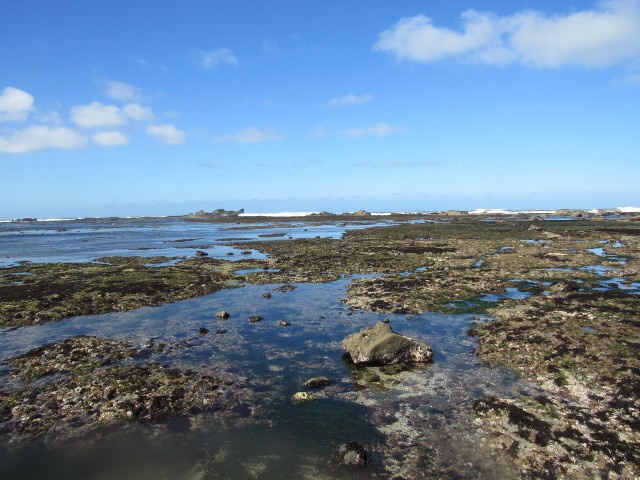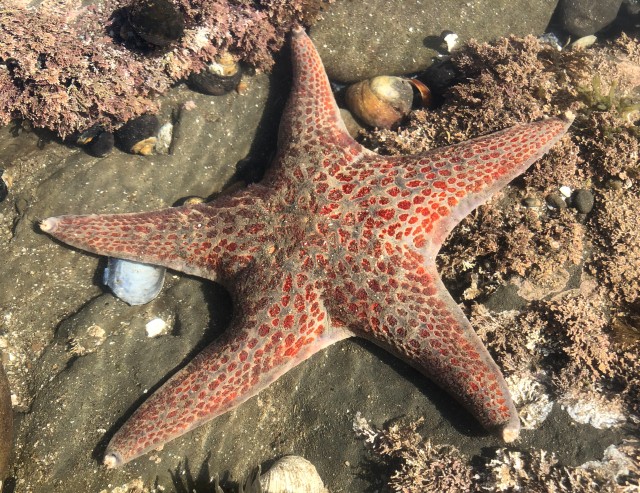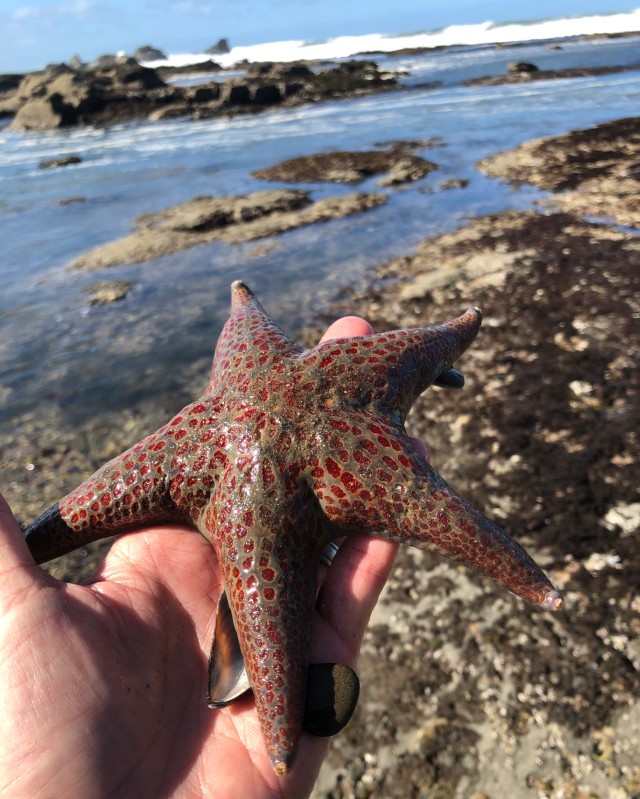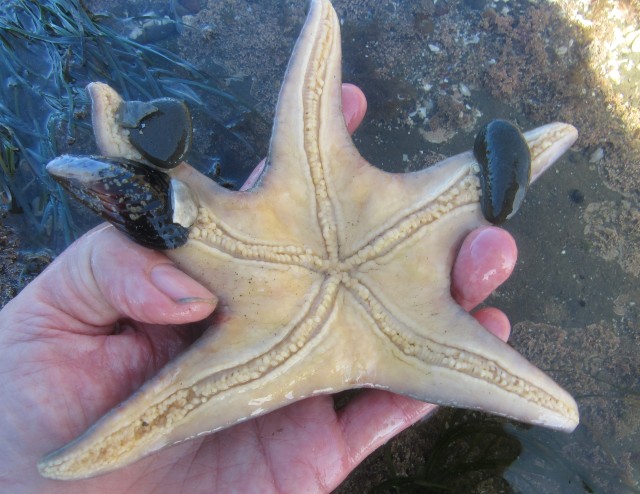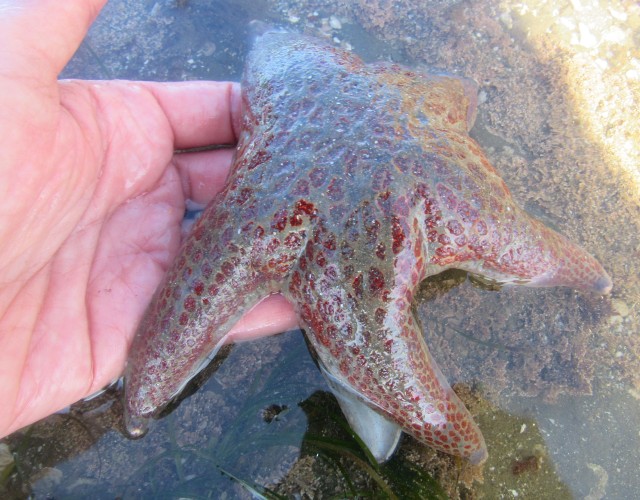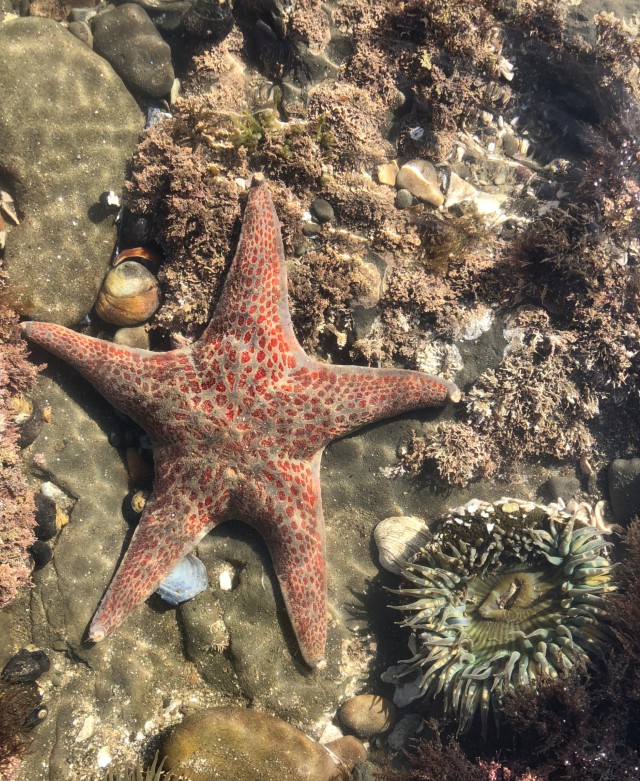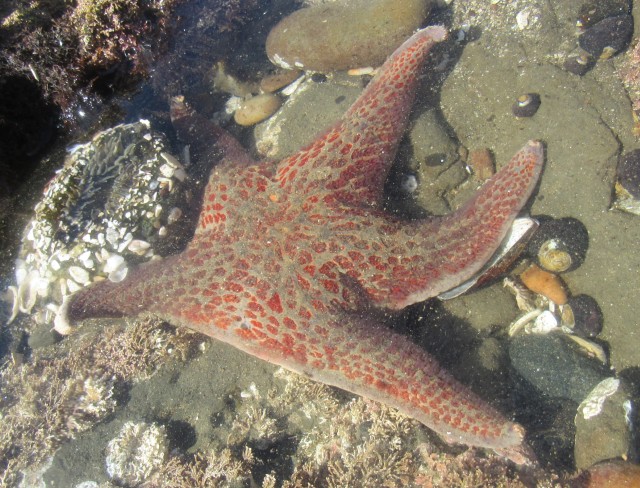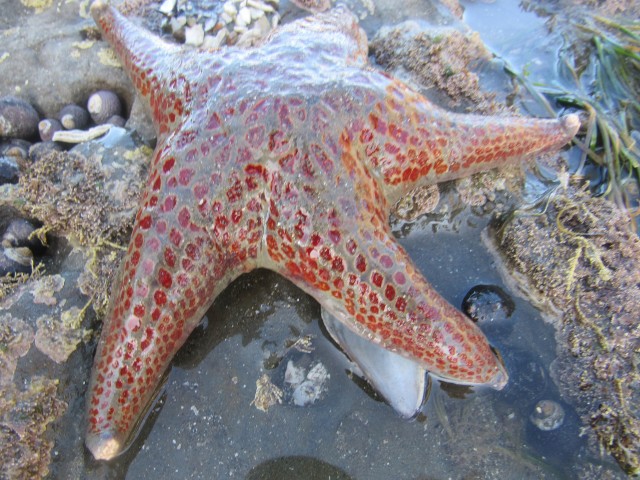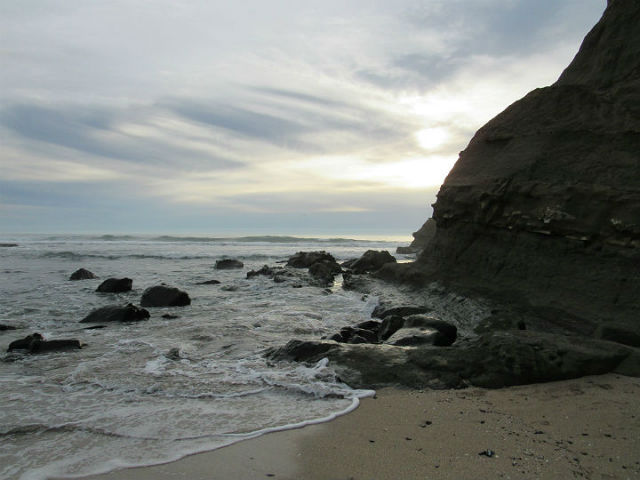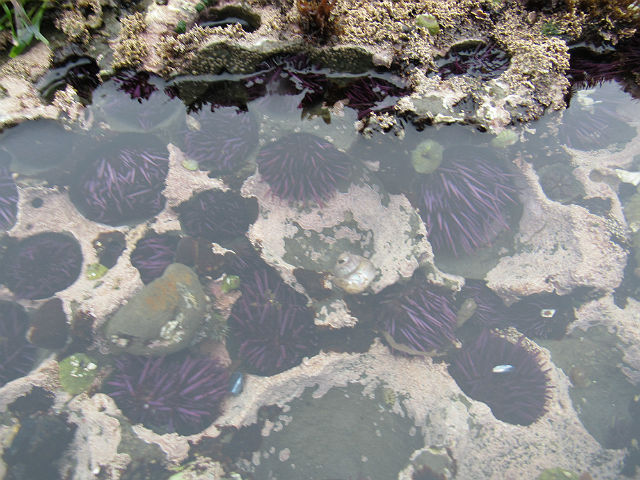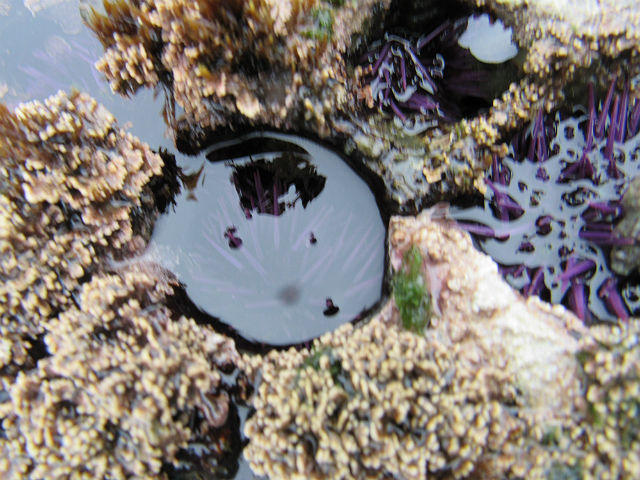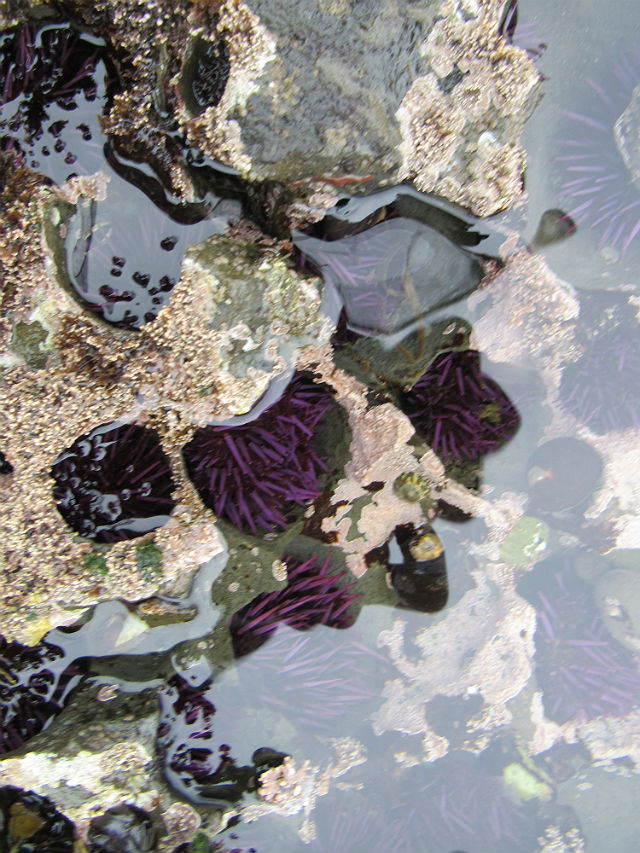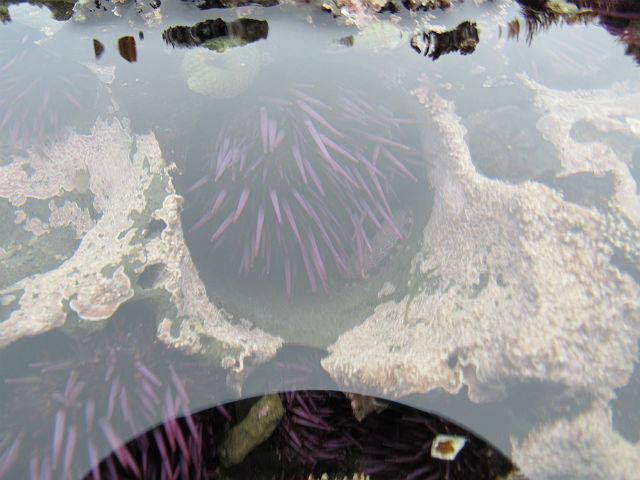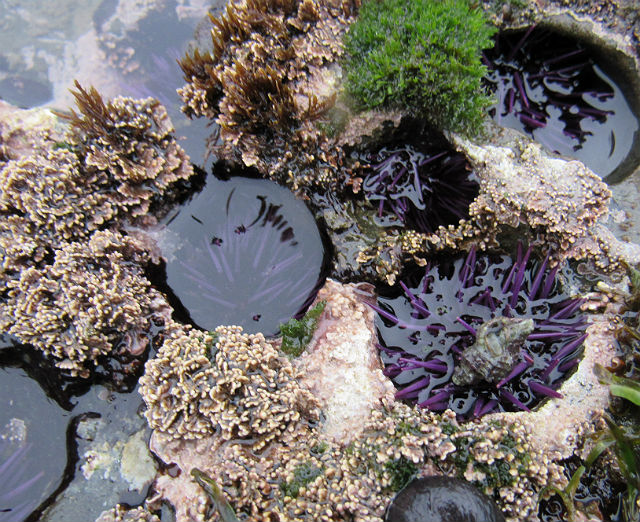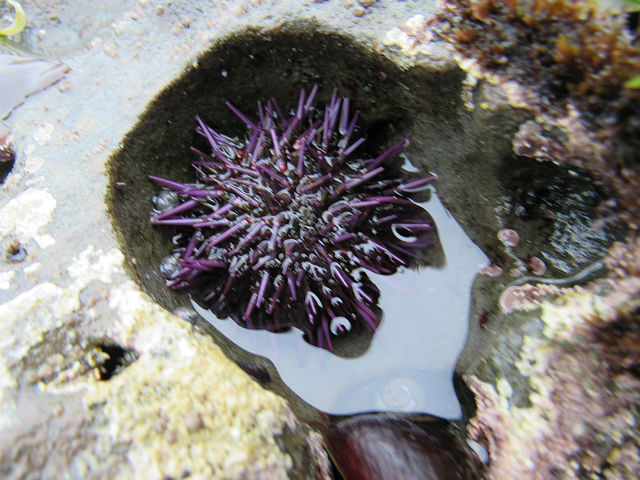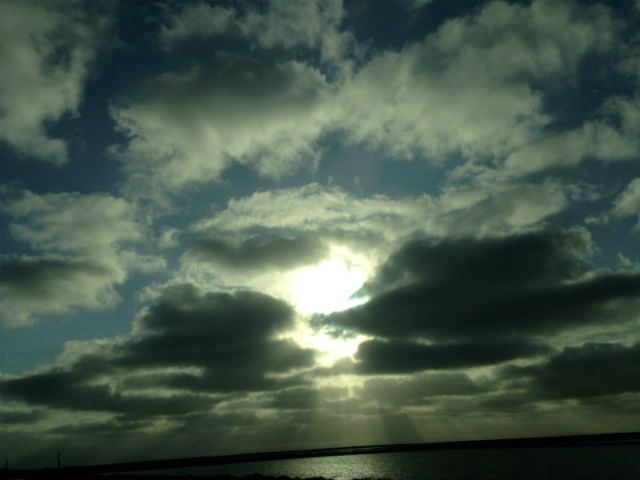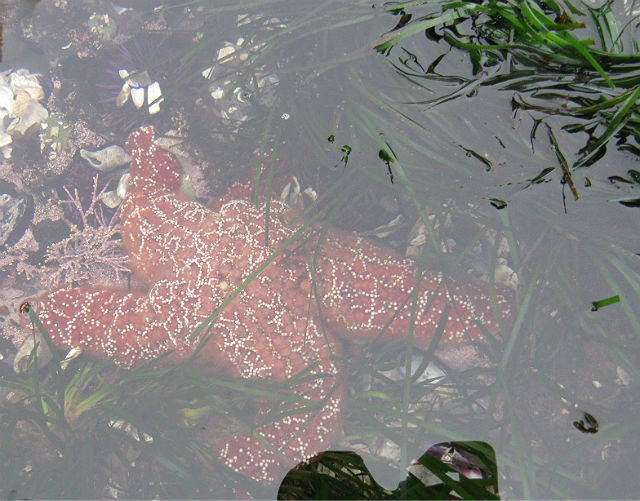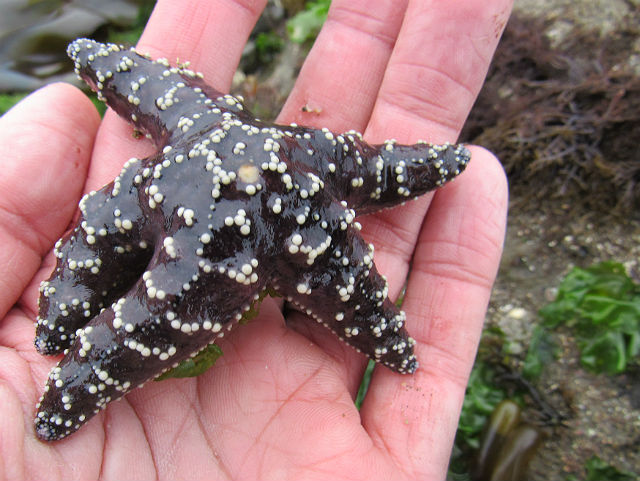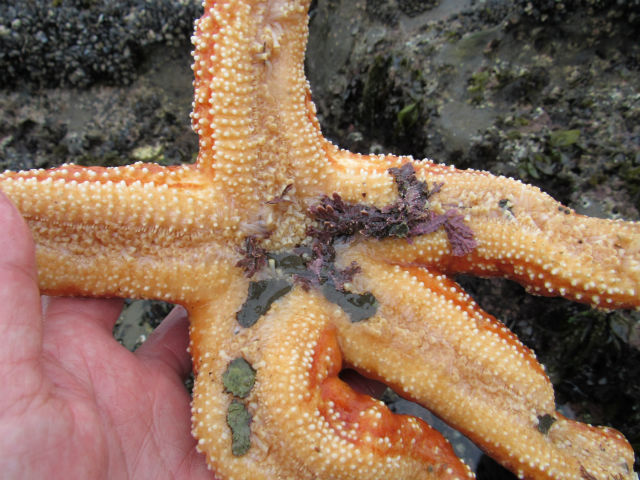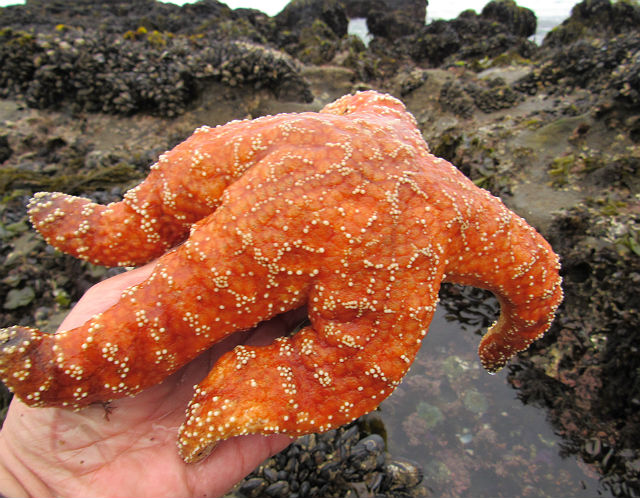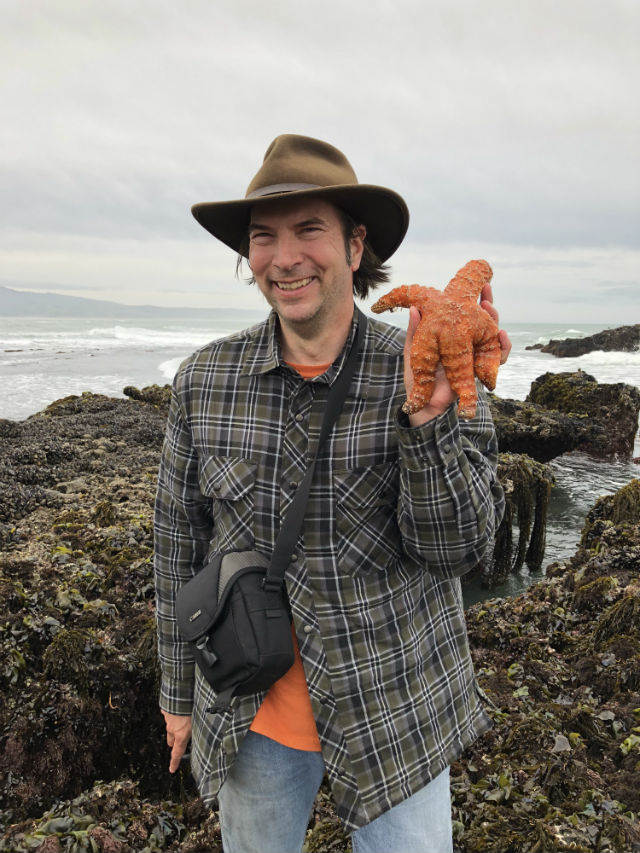While tidepooling on the California Coast, I came across this sea star that was unlike any I’d ever seen before. Instead of being spiny and hard, it was soft and smooth.
Leather Stars usually have five wide arms. Their upper surface is blue-gray and mottled with red and orange. Their texture is smooth and slippery to the touch, somewhat like wet leather.
This animal feeds largely on sea anemones, sea cucumbers and Purple Sea Urchins. Occasionally they may eat sponges, hydroids and other marine invertebrates.
The Leather Star sometimes lives symbiotically with the scaleworm Arctonoe vittata. This worm lives in the tube foot grooves of the sea star.
Unlike many other sea stars, Leather Stars swallow their prey whole and digest it internally. They can grow to about 12 inches in diameter and have a distinctive smell that resembles garlic and sulphur.
In order to hunt for food, the Leather Star has sensors at the end of each arm that can detect prey.
Sea stars can reproduce sexually and asexually. They reproduce asexually by dividing their bodies and regenerating missing parts. The decapitated starfish limb can grow into a new sea star, so long as a part of the central body portion is attached.
Leather Stars are found from Prince William Sound, Alaska to San Diego, California. They live on rocky shores and in clean harbors on pilings and sea walls.

